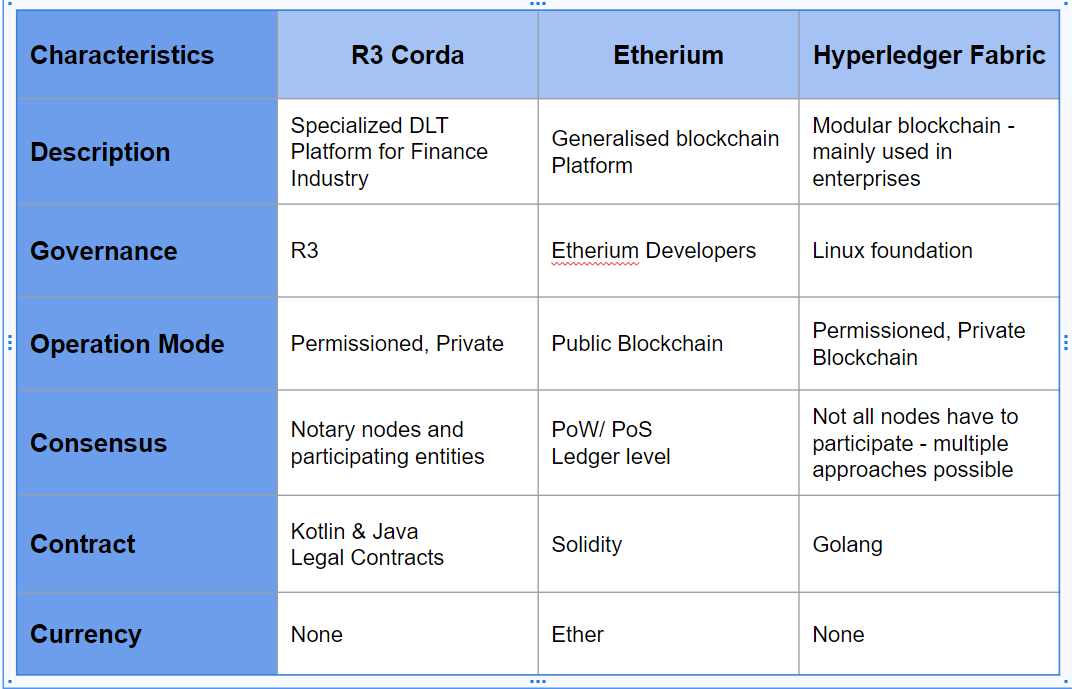DLT and Blockchain
Distributed Ledger Technology (DLT) refers to a digital system that allows multiple parties to maintain and share a common database. DLT can be implemented in a variety of ways, such as using a centralized database, a peer-to-peer network, or a blockchain. Blockchain is a specific type of DLT that uses a decentralized, distributed database to record transactions. In a blockchain, transactions are grouped into blocks, which are then linked together in a chain.

Corda
Corda is a permissioned “distributed ledger” coupled with a workflow messaging network and is not a blockchain. Corda’s main competitors are blockchain platforms such as Ethereum, Hyperledger, and EOS. These platforms also have their own specific use cases. For example, Ethereum being more general-purpose and Hyperledger being more suited for enterprise use cases.
Corda was specifically designed for the financial industry. It has features that make it well-suited for building applications for capital markets, such as its support for private and confidential transactions, its ability to handle complex financial instruments, and its support for integration with existing systems.
Corda’s architecture is designed to meet the needs of financial institutions. It provides a high degree of flexibility, allowing for the creation of custom workflows, integration with existing systems. Corda’s contract functionality enables the creation of complex financial products, such as derivatives and swaps, that can be traded on the platform.
Corda also provides support for private and confidential transactions. This feature is important for capital markets as regulatory compliance and data privacy are critical. Corda allows for the creation of private networks, where only authorized parties can access the data. It also provides support for zero-knowledge proofs, which allows for the verification of transactions without revealing sensitive data.
Corda offers impressive scalability, transaction privacy, state consistency, and workflow flexibility are suitable for a wide variety of enterprise settings including capital markets, trade finance, digital identity, insurance, healthcare, government, supply chain, and telecommunications.




